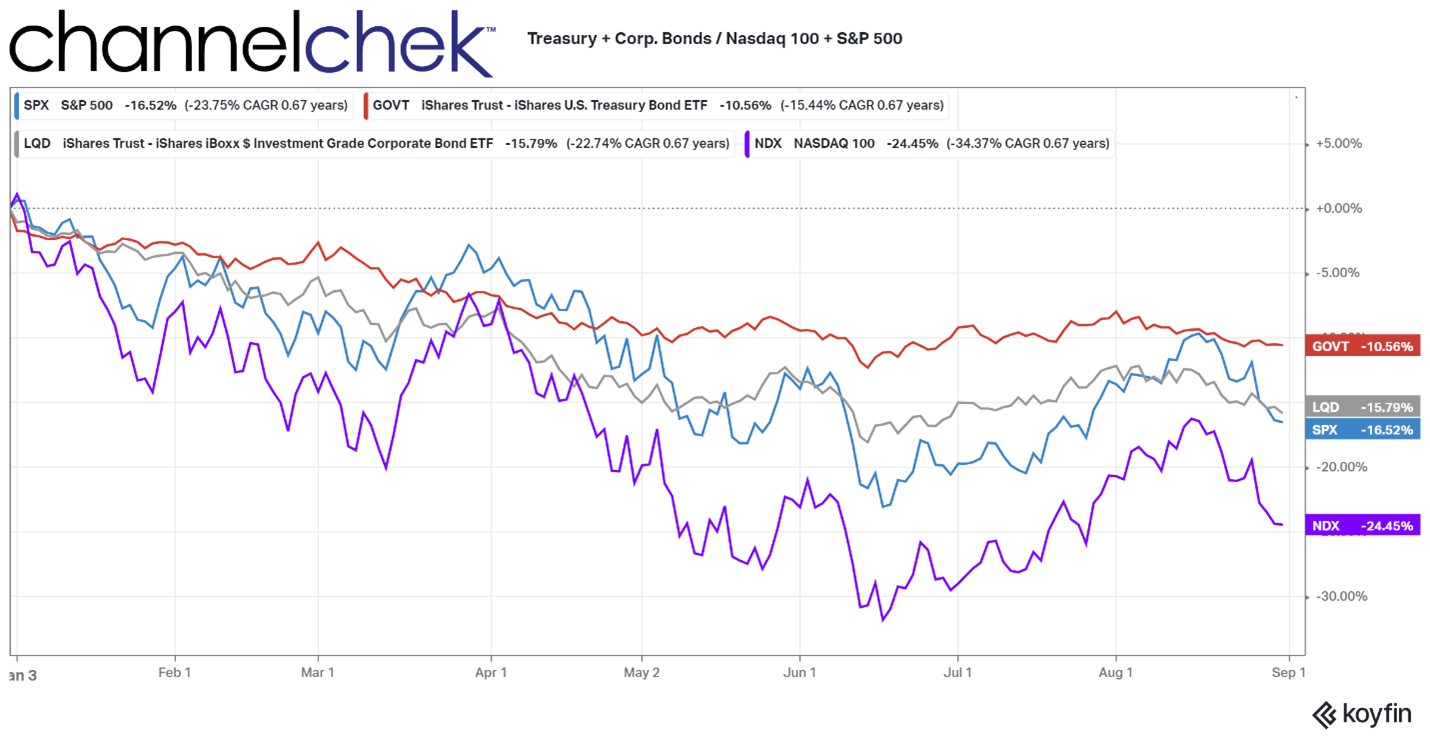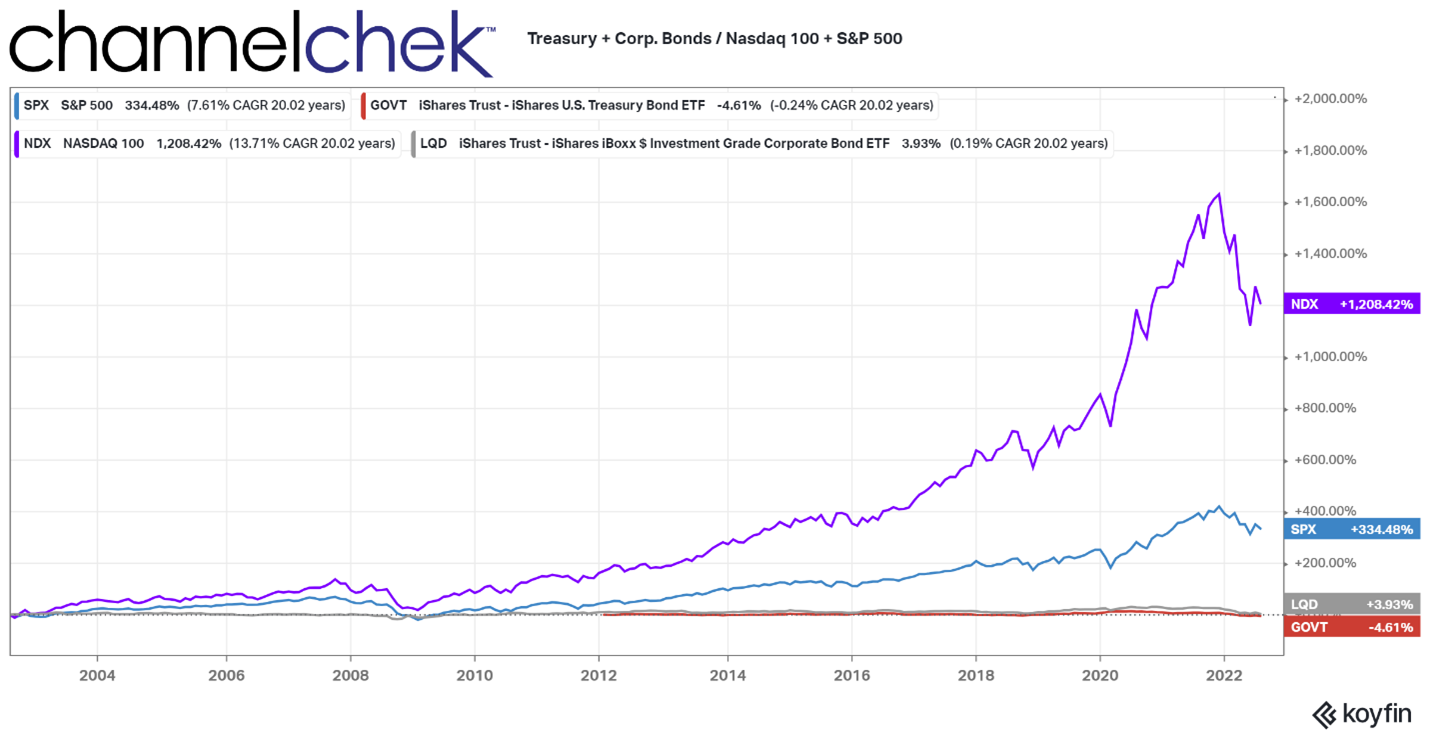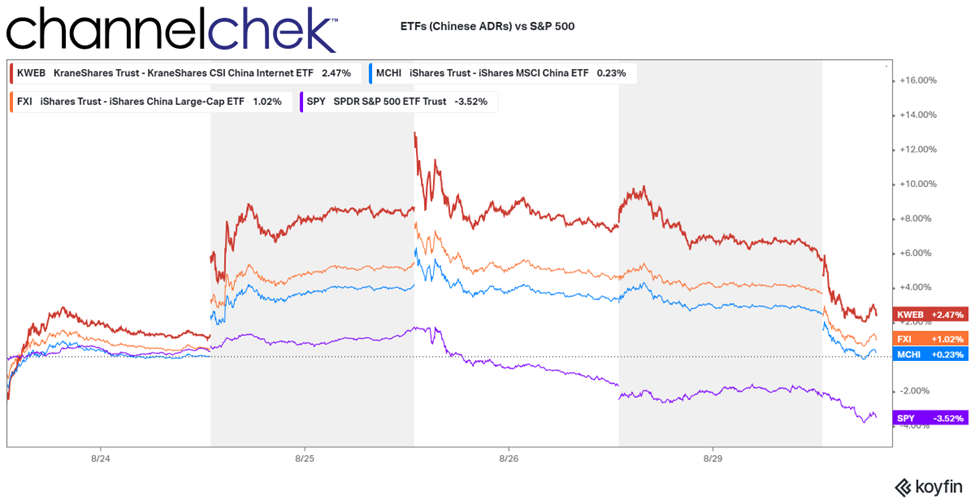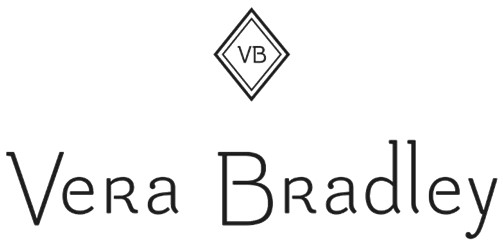
Vera Bradley Announces Second Quarter Fiscal Year 2023 Results
Research, News, and Market Data on Vera Bradley
Aug 31, 2022
Consolidated second quarter net revenues totaled $130.4 million
Second quarter net loss totaled ($29.8) million, or ($0.95) per diluted share; excluding certain items, non-GAAP net income totaled $2.4 million, or $0.08 per diluted share
Balance sheet remains solid, with cash and cash equivalents of $38.3 million and no debt
FORT WAYNE, Ind., Aug. 31, 2022 (GLOBE NEWSWIRE) — Vera Bradley, Inc. (Nasdaq: VRA) today announced its financial results for the second quarter ended July 30, 2022.
In this release, Vera Bradley, Inc. or “the Company” refers to the entire enterprise and includes both the Vera Bradley and Pura Vida brands. Vera Bradley on a stand-alone basis refers to the Vera Bradley brand.
Second Quarter Comments
Rob Wallstrom, Chief Executive Officer of the Company, commented, “While total Company second quarter revenues of $130.4 million were modestly below our expectations and we continued to experience gross margin pressure due to logistics costs, we drove product innovation at both Vera Bradley and Pura Vida, initiated meaningful cost reduction actions, and completed $6.0 million of share repurchases, while maintaining a solid, debt-free balance sheet.
“We are continuing to see bifurcation in the spending of our customer base. At Vera Bradley, Direct Full-Price Channel comparable revenues were nearly flat to last year and up double digits to fiscal 2020 as customers with higher household incomes remained engaged and continued to spend. However, inflationary pressures, especially higher gas prices, continued to negatively affect the purchases of customers with lower household incomes as well as traffic and spending in our Vera Bradley factory stores. Our Vera Bradley Indirect Channel continued to experience a healthy year-over-year rebound. Pura Vida’s ecommerce revenues continued to be affected by the shift in social and digital media effectiveness and escalating digital media costs.
“We are taking decisive actions to strengthen our core brands and the overall enterprise,” Wallstrom added. “We have begun implementation of annualized targeted cost reductions of $25 million, which are expected to be fully realized next fiscal year. These cost reductions will help offset inflationary expense pressures and the recessionary spending behavior from lower-income households. Expense savings are being derived across various areas of the Company, including retail store efficiencies, marketing expenses, information technology contracts, professional services, logistics and operational costs, and corporate payroll. In addition, we are continuing to evaluate and execute strategic price increases for both brands to offset rising raw material and freight costs.
“At the Vera Bradley brand, we remain confident in our core strategy, by continuing to innovate and build on our lifestyle merchandising focus. We will continue to optimize the travel category, which is nearly back to pre-pandemic levels; maximize back-to-campus opportunities, with strategic assortment enhancements; continue with powerful product collaborations like Disney and Harry Potter; and add excitement by expanding our footwear and home assortments this fall.”
Wallstrom continued, “At Pura Vida, we are focused on stabilizing the business and returning the brand to long-term growth. Our number one priority is to build a more diverse, innovative, effective, and performance-based marketing program to drive ecommerce sales. Prudent store growth can play a key role in driving new customer acquisition as we continue to diversify our marketing platforms, and stores demonstrate the power a retail presence can have on driving digital sales, omni-channel loyalty, and spending. We opened one new Pura Vida store location in the quarter, which is exceeding expectations.
“On the product front, we continue to build customer excitement and engagement through collaborations like Disney, Harry Potter, Hello Kitty, and the World Surf League; partnering with key influencers; offering themed-collections centered around key events like Shark Week; and the launch of our new demi-fine collection.”
Wallstrom further noted, “We are planning for the macro environment to remain challenging for the balance of the year and into next year. And, despite the strength in Pura Vida’s store business and opportunity for new store openings, we expect it to take time to return Pura Vida’s ecommerce business to growth as rebuilding and transforming the marketing program is underway. We are taking critical actions that will further strengthen both core brands and our company as a whole, not only to successfully manage through this period but position us for the future. Our teams are focused, and our cash position and balance sheet remain solid. We have successfully managed through difficult business cycles before, and I am confident we will manage through this period as well. We look forward to returning both brands to steady growth.”
Summary of Financial Performance for the Second Quarter
Consolidated net revenues totaled $130.4 million compared to $147.0 million in the prior year second quarter ended July 31, 2021.
For the current year second quarter, Vera Bradley, Inc.’s consolidated net loss totaled ($29.8) million, or ($0.95) per diluted share. These results included $32.2 million of net after tax charges, comprised of $18.2 million of Pura Vida goodwill and intangible asset impairment charges, $4.7 million of inventory adjustments associated with the exit of certain technology products and the write-off of excess mask inventory, $4.7 million of severance charges and other employee costs, $2.3 million of consulting fees associated with cost savings initiatives and the CEO search, $0.9 million of purchase order cancellation fees for spring 2023 goods, $0.6 million of store impairment charges, $0.5 million of intangible asset amortization, and $0.3 million of goodMRKT exit costs. On a non-GAAP basis, Vera Bradley, Inc.’s consolidated second quarter net income totaled $2.4 million, or $0.08 per diluted share.
For the prior year second quarter, Vera Bradley, Inc.’s consolidated net income totaled $9.1 million, or $0.26 per diluted share. These results included $0.4 million of net after tax charges related to intangible asset amortization. On a non-GAAP basis, Vera Bradley, Inc.’s consolidated second quarter net income totaled $9.5 million, or $0.28 per diluted share.
Summary of Financial Performance for the Six Months
Consolidated net revenues totaled $228.8 million for the current year six months ended July 30, 2022, compared to $256.1 million in the prior year six month period ended July 31, 2021.
For the current year six months, Vera Bradley, Inc.’s consolidated net loss totaled ($36.7) million, or ($1.15) per diluted share. These results included $33.1 million of net after tax charges, comprised of $18.2 million of Pura Vida goodwill and intangible asset impairment charges, $4.7 million of inventory adjustments associated with the exit of certain technology products and the write-off of excess mask inventory, $4.7 million of severance charges and other employee costs, $2.4 million of consulting fees associated with cost savings initiatives and the CEO search, $1.0 million of store and right-of-use asset impairment charges, $0.9 million of purchase order cancellation fees for spring 2023 goods, $0.9 million of intangible asset amortization, and $0.3 million of goodMRKT exit costs. On a non-GAAP basis, Vera Bradley, Inc.’s consolidated net loss for the six months totaled ($3.6) million, or ($0.11) per diluted share.
For the prior year six months, Vera Bradley, Inc’s consolidated net income totaled $6.9 million, or $0.20 per diluted share. These results included $0.9 million of net after tax charges related to intangible asset amortization. On a non-GAAP basis, excluding these charges, Vera Bradley, Inc.’s consolidated net income for the prior year totaled $7.8 million, or $0.23 per diluted share, for the six months.
Non-GAAP Numbers
The current year non-GAAP second quarter and six-month income statement numbers referenced below exclude the previously outlined goodwill and intangible asset impairment charges, inventory adjustments, severance charges and other employee costs, consulting fees, store and right-of-use asset impairment charges, purchase order cancellation fees, intangible asset amortization, and goodMRKT exit costs. The prior year non-GAAP second quarter and six-month income statement numbers referenced below exclude the previously outlined intangible asset amortization.
Second Quarter Details
Current year second quarter Vera Bradley Direct segment revenues totaled $87.0 million, a 10.4% decrease from $97.1 million in the prior year second quarter. Comparable sales declined 13.8% in the second quarter. The Company permanently closed eight full-line stores and opened six factory outlet stores in the last twelve months.
Vera Bradley Indirect segment revenues totaled $17.3 million, a 2.9% increase over $16.8 million in the prior year second quarter, reflecting an increase in certain key account orders.
Pura Vida segment revenues totaled $26.0 million, a 21.3% decrease from $33.1 million in the prior year.
Second quarter consolidated gross profit totaled $60.5 million, or 46.4% of net revenues, compared to $80.4 million, or 54.6% of net revenues, in the prior year. On a non-GAAP basis, current year gross profit totaled $67.8 million, or 52.0% of net revenues. The current year gross profit rate was negatively impacted by higher inbound and outbound freight expense, deleverage of overhead costs, and channel mix changes, partially offset by price increases.
Second quarter consolidated SG&A expense totaled $74.0 million, or 56.8% of net revenues, compared to $68.7 million, or 46.7% of net revenues, in the prior year. On a non-GAAP basis, consolidated SG&A expense totaled $64.0 million, or 49.1% of net revenues, for the current year second quarter, compared to $68.0 million, or 46.2% of net revenues, in the prior year. As expected, Vera Bradley’s non-GAAP SG&A current year expenses were lower than the prior year primarily due to a reduction in variable-related expenses due to the lower sales volume and other cost reduction initiatives.
The Company’s second quarter consolidated operating loss totaled ($42.8) million, or (32.8%) of net revenues, compared to consolidated operating income of $12.6 million, or 8.6% of net revenues, in the prior year second quarter. On a non-GAAP basis, the Company’s current year consolidated operating income totaled $3.9 million, or 3.0% of net revenues, compared to $13.4 million, or 9.1% of net revenues, in the prior year.
By segment:
- Vera Bradley Direct operating income was $10.0 million, or 11.5% of Direct net revenues, for the second quarter, compared to $23.2 million, or 23.9% of Direct net revenues, in the prior year. On a non-GAAP basis, current year Direct operating income totaled $16.2 million, or 18.6% of Direct revenues.
- Vera Bradley Indirect operating income was $3.9 million, or 22.6% of Indirect net revenues, compared to $5.6 million, or 33.3% of Indirect net revenues, in the prior year. On a non-GAAP basis, current year Indirect operating income totaled $4.9 million, or 28.4% of Indirect net revenues.
- Pura Vida’s operating loss was ($28.5) million, or (109.6%) of Pura Vida net revenues, in the current year, compared to operating income of $3.2 million, or 9.8% of Pura Vida net revenues, in the prior year. On a non-GAAP basis, Pura Vida’s operating income was $2.6 million, or 9.8% of Pura Vida net revenues, compared to $4.0 million, or 12.1% of Pura Vida net revenues, in the prior year.
Details for the Six Months
Vera Bradley Direct segment revenues for the current year six-month period totaled $148.6 million, a 9.3% decrease from $163.9 million in the prior year. Comparable sales declined 12.7% for the six months.
Vera Bradley Indirect segment revenues for the six months totaled $34.3 million, a 6.9% increase over $32.1 million, last year, reflecting an increase in certain key and specialty account orders.
Pura Vida segment revenues totaled $45.9 million, a 23.8% decline from $60.2 million in the prior year.
Consolidated gross profit for the six months totaled $113.0 million, or 49.4% of net revenues, compared to $139.5 million, or 54.5% of net revenues, in the prior year. On a non-GAAP basis, current year gross profit totaled $120.3 million, or 52.6% of net revenues. The current year gross profit rate was negatively affected by higher inbound and outbound freight expense, deleverage of overhead costs, and channel mix changes, partially offset by price increases.
For the six months, consolidated SG&A expense totaled $135.0 million, or 59.0% of net revenues, compared to $129.6 million, or 50.6% of net revenues, in the prior year. On a non-GAAP basis, current year consolidated SG&A expense totaled $123.4 million, or 53.9% of net revenues, compared to $128.1 million, or 50.0% of net revenues, in the prior year. As expected, Vera Bradley’s non-GAAP SG&A current year expenses were lower than the prior year primarily due to a reduction in variable-related expenses due to the lower sales volume and other cost reduction initiatives.
For the six months, the Company’s consolidated operating loss totaled ($51.1) million, or (22.3%) of net revenues, compared to consolidated operating income of $10.7 million, or 4.2% of net revenues, in the prior year six-month period. On a non-GAAP basis, the Company’s current year consolidated operating loss was ($2.9) million, or (1.2%) of net revenues, compared to consolidated operating income of $12.2 million, or 4.8% or net revenues, in the prior year.
By segment:
- Vera Bradley Direct operating income was $15.5 million, or 10.5% of Direct net revenues, compared to $34.0 million, or 20.8% of Direct net revenues, in the prior year. On a non-GAAP basis, current year Direct operating income was $21.7 million, or 14.6% of Direct net revenues.
- Vera Bradley Indirect operating income was $9.4 million, or 27.4% of Indirect net revenues, compared to $10.1 million, or 31.3% of Indirect net revenues, in the prior year. On a non-GAAP basis, current year Indirect operating income totaled $10.4 million, or 30.3% of Indirect net revenues.
- Pura Vida’s operating loss was ($27.5) million, or (59.9%) of Pura Vida net revenues, for the current year, compared to operating income of $5.7 million, or 9.5% of Pura Vida net revenues, in the prior year. On a non-GAAP basis, Pura Vida’s operating income was $4.4 million, or 9.5% of Pura Vida net revenues, compared to $7.3 million, or 12.1% of Pura Vida net revenues, in the prior year.
Balance Sheet
Net capital spending for the second quarter and six months totaled $2.7 million and $4.4 million, respectively.
Cash, cash equivalents, and investments as of July 30, 2022 totaled $38.3 million compared to $76.5 million at the end of last year’s second quarter. The Company had no borrowings on its $75 million ABL credit facility at quarter end.
Total quarter-end inventory was $179.6 million, compared to $148.0 million at the end of the second quarter last year. Current year inventory was higher than the prior year primarily due to approximately $24.0 million of additional inventory in-transit as the Company continues to navigate delays in the supply chain and ensures it has adequate inventory coverage going into the fall and holiday selling periods.
During the second quarter, the Company repurchased approximately $6.0 million of its common stock (approximately 1.0 million shares at an average price of $6.11), bringing year-to-date purchases through the end of the second quarter to approximately $16.5 million (approximately 2.4 million shares at an average price of $6.84). The Company has $29.3 million of remaining availability under its $50.0 million repurchase authorization that expires in December 2024.
Forward Outlook
Wallstrom also commented, “We expect the challenging macroeconomic environment to continue for the balance of the year and anticipate it will take additional time to return the Pura Vida ecommerce business to growth, high gas prices and other inflationary pressures will continue to impact the Vera Bradley factory channel, and there will be continued pressure on gross margin. Therefore, we believe it is appropriate to further adjust our outlook for the fiscal year.”
Excluding net revenues, all forward-looking guidance numbers referenced below are non-GAAP. The prior year SG&A and earnings per diluted share numbers exclude the previously disclosed net charges related to intangible asset amortization. Current year guidance excludes previously disclosed goodwill impairment charges, inventory adjustments, severance and other employee costs, consulting fees, store and right-of-use asset impairment charges, purchase order cancellation fees, intangible asset amortization, goodMRKT exit costs, and any similar charges.
For Fiscal 2023, the Company’s updated expectations are as follows:
- Consolidated net revenues of $480 to $490 million. Net revenues totaled $540.5 million in Fiscal 2022. Year-over-year Vera Bradley revenues are expected to decline between 7% and 9%, and Pura Vida revenues are expected to decline between 16% and 21%.
- A consolidated gross profit percentage of 53.7% to 54.1% compared to 53.3% in Fiscal 2022. The expected year-over-year increase is primarily related to incremental inbound and outbound freight expense and expected deleverage on overhead costs, more than offset by price increases.
- Consolidated SG&A expense of $246 to $250 million compared to $258.8 million in Fiscal 2022. The reduction in SG&A expense is being driven by cost reduction initiatives and a reduction in compensation expense, marketing, and other variable-related expenses due to the expected sales decline from the prior year.
- Consolidated operating income of $11.6 to $14.5 million compared to $30.1 million in Fiscal 2022.
- Consolidated diluted EPS of $0.20 to $0.28 based on diluted weighted-average shares outstanding of 31.6 million and an effective tax rate of between 24.0 and 25.0%. Diluted EPS totaled $0.57 last year.
- Net capital spending of approximately $8 to $10 million compared to $5.5 million in the prior year, reflecting investments associated with new Vera Bradley factory and Pura Vida store locations and technology and logistics enhancements.
Disclosure Regarding Non-GAAP Measures
The Company’s management does not, nor does it suggest that investors should, consider the supplemental non-GAAP financial measures in isolation from, or as a substitute for, financial information prepared in accordance with accounting principles generally accepted in the United States (“GAAP”). Further, the non-GAAP measures utilized by the Company may be unique to the Company, as they may be different from non-GAAP measures used by other companies.
The Company believes that the non-GAAP measures presented in this earnings release, including free cash flow; cost of sales; gross profit; selling, general, and administrative expenses; impairment of goodwill and intangible assets; operating (loss) income; net (loss) income; net (loss) income attributable and available to Vera Bradley, Inc.; and diluted net (loss) income per share available to Vera Bradley, Inc. common shareholders, along with the associated percentages of net revenues, are helpful to investors because they allow for a more direct comparison of the Company’s year-over-year performance and are consistent with management’s evaluation of business performance. A reconciliation of the non-GAAP measures to the most directly comparable GAAP measures can be found in the Company’s supplemental schedules included in this earnings release. A recast of the supplemental schedule for the current year first quarter has been provided to exclude the consulting fees related to the cost savings initiatives for consistency with the current year second quarter supplemental schedule.
Call Information
A conference call to discuss results for the second quarter is scheduled for today, Wednesday, August 31, 2022, at 9:30 a.m. Eastern Time. A broadcast of the call will be available via Vera Bradley’s Investor Relations section of its website, www.verabradley.com. Alternatively, interested parties may dial into the call at (800) 437-2398, and enter the access code 3589431. A replay will be available shortly after the conclusion of the call and remain available through September 14, 2022. To access the recording, listeners should dial (844) 512-2921, and enter the access code 3589431.
About Vera Bradley, Inc.
Vera Bradley, Inc. operates two unique lifestyle brands – Vera Bradley and Pura Vida. Vera Bradley and Pura Vida are complementary businesses, both with devoted, emotionally-connected, and multi-generational female customer bases; alignment as casual, comfortable, affordable, and fun brands; positioning as “gifting” and socially-connected brands; strong, entrepreneurial cultures; a keen focus on community, charity, and social consciousness; multi-channel distribution strategies; and talented leadership teams aligned and committed to the long-term success of their brands.
Vera Bradley, based in Fort Wayne, Indiana, is a leading designer of women’s handbags, luggage and other travel items, fashion and home accessories, and unique gifts. Founded in 1982 by friends Barbara Bradley Baekgaard and Patricia R. Miller, the brand is known for its innovative designs, iconic patterns, and brilliant colors that inspire and connect women unlike any other brand in the global marketplace.
In July 2019, Vera Bradley, Inc. acquired a 75% interest in Creative Genius, Inc., which also operates under the name Pura Vida Bracelets (“Pura Vida”). Pura Vida, based in La Jolla, California, is a digitally native, highly-engaging lifestyle brand founded in 2010 by friends Paul Goodman and Griffin Thall. Pura Vida has a differentiated and expanding offering of bracelets, jewelry, and other lifestyle accessories.
The Company has three reportable segments: Vera Bradley Direct (“VB Direct”), Vera Bradley Indirect (“VB Indirect”), and Pura Vida. The VB Direct business consists of sales of Vera Bradley products through Vera Bradley full-line and factory outlet stores in the United States, verabradley.com, verabradley.ca, Vera Bradley’s online outlet site, and the Vera Bradley annual outlet sale in Fort Wayne, Indiana. The VB Indirect business consists of sales of Vera Bradley products to approximately 1,700 specialty retail locations throughout the United States, as well as select department stores, national accounts, third party e-commerce sites, and third-party inventory liquidators, and royalties recognized through licensing agreements related to the Vera Bradley brand. The Pura Vida segment consists of sales of Pura Vida products through the Pura Vida websites, www.puravidabracelets.com, www.puravidabracelets.eu, and
www.puravidabracelets.ca; through the distribution of its products to wholesale retailers and department stores; and through its two Pura Vida retail stores.
Website Information
We routinely post important information for investors on our website
www.verabradley.com in the “Investor Relations” section. We intend to use this webpage as a means of disclosing material, non-public information and for complying with our disclosure obligations under Regulation FD. Accordingly, investors should monitor the Investor Relations section of our website, in addition to following our press releases, SEC filings, public conference calls, presentations and webcasts. The information contained on, or that may be accessed through, our webpage is not incorporated by reference into, and is not a part of, this document.
Investors and other interested parties may also access the Company’s most recent Corporate Responsibility and Sustainability Report outlining its ESG (Environmental, Social, and Governance) initiatives at https://verabradley.com/pages/corporate-responsibility.
Vera Bradley Safe Harbor Statement
Certain statements in this release are “forward-looking statements” made pursuant to the safe-harbor provisions of the Private Securities Litigation Reform Act of 1995. Such forward-looking statements reflect the Company’s current expectations or beliefs concerning future events and are subject to various risks and uncertainties that may cause actual results to differ materially from those that we expected, including: possible adverse changes in general economic conditions and their impact on consumer confidence and spending; possible inability to predict and respond in a timely manner to changes in consumer demand; possible loss of key management or design associates or inability to attract and retain the talent required for our business; possible inability to maintain and enhance our brands; possible inability to successfully implement the Company’s long-term strategic plan; possible inability to successfully open new stores, close targeted stores, and/or operate current stores as planned; incremental tariffs or adverse changes in the cost of raw materials and labor used to manufacture our products; possible adverse effects resulting from a significant disruption in our distribution facilities; or business disruption caused by COVID-19 or other pandemics. Risks, uncertainties, and assumptions also include the possibility that Pura Vida acquisition benefits may not materialize as expected and that Pura Vida’s business may not perform as expected. More information on potential factors that could affect the Company’s financial results is included from time to time in the “Risk Factors” and “Management’s Discussion and Analysis of Financial Condition and Results of Operations” sections of the Company’s public reports filed with the SEC, including the Company’s Form 10-K for the fiscal year ended January 29, 2022. We undertake no obligation to publicly update or revise any forward-looking statement. Financial schedules are attached to this release.
CONTACTS:
Investors:
Julia Bentley, VP of Investor Relations and Communications
jbentley@verabradley.com
(260) 207-5116
Media:
mediacontact@verabradley.com
877-708-VERA (8372)
|
Vera Bradley, Inc.
|
|
Condensed Consolidated Balance Sheets
|
|
(in thousands)
|
|
(unaudited)
|
|
|
|
|
|
|
|
|
|
July 30, 2022
|
|
January 29, 2022
|
|
July 31, 2021
|
|
Assets
|
|
|
|
|
|
|
Current assets:
|
|
|
|
|
|
|
Cash and cash equivalents
|
$
|
38,321
|
|
|
$
|
88,436
|
|
|
$
|
75,753
|
|
|
Short-term investments
|
|
–
|
|
|
|
–
|
|
|
|
727
|
|
|
Accounts receivable, net
|
|
25,593
|
|
|
|
20,681
|
|
|
|
29,897
|
|
|
Inventories
|
|
179,557
|
|
|
|
144,881
|
|
|
|
148,048
|
|
|
Income taxes receivable
|
|
5,113
|
|
|
|
9,391
|
|
|
|
6,289
|
|
|
Prepaid expenses and other current assets
|
|
16,913
|
|
|
|
15,928
|
|
|
|
15,627
|
|
|
Total current assets
|
|
265,497
|
|
|
|
279,317
|
|
|
|
276,341
|
|
|
|
|
|
|
|
|
|
Operating right-of-use assets
|
|
85,793
|
|
|
|
79,873
|
|
|
|
86,617
|
|
|
Property, plant, and equipment, net
|
|
60,305
|
|
|
|
59,941
|
|
|
|
62,350
|
|
|
Intangible assets, net
|
|
32,769
|
|
|
|
44,223
|
|
|
|
45,759
|
|
|
Goodwill
|
|
24,833
|
|
|
|
44,254
|
|
|
|
44,254
|
|
|
Deferred income taxes
|
|
9,276
|
|
|
|
3,857
|
|
|
|
3,294
|
|
|
Other assets
|
|
4,748
|
|
|
|
6,081
|
|
|
|
6,444
|
|
|
Total assets
|
$
|
483,221
|
|
|
$
|
517,546
|
|
|
$
|
525,059
|
|
|
|
|
|
|
|
|
|
Liabilities, Redeemable Noncontrolling Interest, and Shareholders’ Equity
|
|
|
|
|
|
|
Current liabilities:
|
|
|
|
|
|
|
Accounts payable
|
$
|
43,722
|
|
|
$
|
30,492
|
|
|
$
|
30,247
|
|
|
Accrued employment costs
|
|
16,018
|
|
|
|
12,463
|
|
|
|
15,465
|
|
|
Short-term operating lease liabilities
|
|
19,768
|
|
|
|
18,699
|
|
|
|
20,584
|
|
|
Other accrued liabilities
|
|
21,526
|
|
|
|
16,422
|
|
|
|
17,522
|
|
|
Income taxes payable
|
|
374
|
|
|
|
–
|
|
|
|
–
|
|
|
Total current liabilities
|
|
101,408
|
|
|
|
78,076
|
|
|
|
83,818
|
|
|
|
|
|
|
|
|
|
Long-term operating lease liabilities
|
|
84,015
|
|
|
|
80,861
|
|
|
|
87,984
|
|
|
Other long-term liabilities
|
|
157
|
|
|
|
195
|
|
|
|
71
|
|
|
Total liabilities
|
|
185,580
|
|
|
|
159,132
|
|
|
|
171,873
|
|
|
|
|
|
|
|
|
|
Redeemable noncontrolling interest
|
|
23,491
|
|
|
|
30,974
|
|
|
|
30,364
|
|
|
Shareholders’ equity:
|
|
|
|
|
|
|
Additional paid-in-capital
|
|
107,941
|
|
|
|
107,907
|
|
|
|
106,455
|
|
|
Retained earnings
|
|
297,623
|
|
|
|
334,364
|
|
|
|
323,431
|
|
|
Accumulated other comprehensive loss
|
|
(135
|
)
|
|
|
(29
|
)
|
|
|
(4
|
)
|
|
Treasury stock
|
|
(131,279
|
)
|
|
|
(114,802
|
)
|
|
|
(107,060
|
)
|
|
Total shareholders’ equity of Vera Bradley, Inc.
|
|
274,150
|
|
|
|
327,440
|
|
|
|
322,822
|
|
|
Total liabilities, redeemable noncontrolling interest, and shareholders’ equity
|
$
|
483,221
|
|
|
$
|
517,546
|
|
|
$
|
525,059
|
|
|
|
|
|
|
|
|
|
Vera Bradley, Inc.
|
|
|
Condensed Consolidated Statements of Operations
|
|
|
(in thousands, except per share amounts)
|
|
|
(unaudited)
|
|
|
|
|
|
|
|
|
|
|
|
|
|
|
|
|
|
|
|
|
|
|
|
Thirteen Weeks Ended
|
|
Twenty-Six Weeks Ended
|
|
|
|
July 30, 2022
|
|
July 31, 2021
|
|
July 30, 2022
|
|
July 31, 2021
|
|
|
|
|
|
|
|
|
|
|
|
|
Net revenues
|
$
|
130,371
|
|
|
$
|
147,048
|
|
$
|
228,830
|
|
|
$
|
256,142
|
|
|
Cost of sales
|
|
69,854
|
|
|
|
66,687
|
|
|
115,799
|
|
|
|
116,617
|
|
|
Gross profit
|
|
60,517
|
|
|
|
80,361
|
|
|
113,031
|
|
|
|
139,525
|
|
|
Selling, general, and administrative expenses
|
|
74,042
|
|
|
|
68,729
|
|
|
134,956
|
|
|
|
129,625
|
|
|
Impairment of goodwill and intangible assets
|
|
29,338
|
|
|
|
–
|
|
|
29,338
|
|
|
|
–
|
|
|
Other income, net
|
|
42
|
|
|
|
1,016
|
|
|
209
|
|
|
|
789
|
|
|
Operating (loss) income
|
|
(42,821
|
)
|
|
|
12,648
|
|
|
(51,054
|
)
|
|
|
10,689
|
|
|
Interest expense, net
|
|
36
|
|
|
|
119
|
|
|
76
|
|
|
|
209
|
|
|
Income (loss) before income taxes
|
|
(42,857
|
)
|
|
|
12,529
|
|
|
(51,130
|
)
|
|
|
10,480
|
|
|
Income tax (benefit) expense
|
|
(5,956
|
)
|
|
|
2,672
|
|
|
(7,519
|
)
|
|
|
2,141
|
|
|
Net (loss) income
|
|
(36,901
|
)
|
|
|
9,857
|
|
|
(43,611
|
)
|
|
|
8,339
|
|
|
Less: Net (loss) income attributable to redeemable noncontrolling interest
|
|
(7,134
|
)
|
|
|
807
|
|
|
(6,870
|
)
|
|
|
1,434
|
|
|
Net (loss) income attributable to Vera Bradley, Inc.
|
$
|
(29,767
|
)
|
|
$
|
9,050
|
|
$
|
(36,741
|
)
|
|
$
|
6,905
|
|
|
|
|
|
|
|
|
|
|
|
|
Basic weighted-average shares outstanding
|
|
31,429
|
|
|
|
34,001
|
|
|
32,051
|
|
|
|
33,795
|
|
|
Diluted weighted-average shares outstanding
|
|
31,429
|
|
|
|
34,500
|
|
|
32,051
|
|
|
|
34,502
|
|
|
|
|
|
|
|
|
|
|
|
|
Basic net (loss) income per share available to Vera Bradley, Inc. common shareholders
|
$
|
(0.95
|
)
|
|
$
|
0.27
|
|
$
|
(1.15
|
)
|
|
$
|
0.20
|
|
|
Diluted net (loss) income per share available to Vera Bradley, Inc. common shareholders
|
$
|
(0.95
|
)
|
|
$
|
0.26
|
|
$
|
(1.15
|
)
|
|
$
|
0.20
|
|
|
|
|
|
|
|
|
|
|
|
|
Vera Bradley, Inc.
|
|
Condensed Consolidated Statements of Cash Flows
|
|
(in thousands)
|
|
(unaudited)
|
|
|
|
|
|
|
|
|
|
|
|
|
Twenty-Six Weeks Ended
|
|
|
July 30,
2022
|
|
July 31,
2021
|
|
Cash flows from operating activities
|
|
|
|
|
Net (loss) income
|
$
|
(43,611
|
)
|
|
$
|
8,339
|
|
|
Adjustments to reconcile net (loss) income to net cash (used in) provided by operating activities:
|
|
|
|
|
Depreciation of property, plant, and equipment
|
|
4,371
|
|
|
|
4,514
|
|
|
Amortization of operating right-of-use assets
|
|
10,621
|
|
|
|
10,026
|
|
|
Goodwill and intangible asset impairment
|
|
29,338
|
|
|
|
–
|
|
|
Other impairment charges
|
|
1,351
|
|
|
|
–
|
|
|
Amortization of intangible assets
|
|
1,537
|
|
|
|
1,537
|
|
|
Provision for doubtful accounts
|
|
(119
|
)
|
|
|
26
|
|
|
Stock-based compensation
|
|
1,444
|
|
|
|
3,372
|
|
|
Deferred income taxes
|
|
(5,419
|
)
|
|
|
236
|
|
|
Other non-cash gain, net
|
|
–
|
|
|
|
(45
|
)
|
|
Changes in assets and liabilities:
|
|
|
|
|
Accounts receivable
|
|
(4,793
|
)
|
|
|
(2,380
|
)
|
|
Inventories
|
|
(34,676
|
)
|
|
|
(6,632
|
)
|
|
Prepaid expenses and other assets
|
|
348
|
|
|
|
2,153
|
|
|
Accounts payable
|
|
12,759
|
|
|
|
2,696
|
|
|
Income taxes
|
|
4,652
|
|
|
|
762
|
|
|
Operating lease liabilities, net
|
|
(12,910
|
)
|
|
|
(13,202
|
)
|
|
Accrued and other liabilities
|
|
7,989
|
|
|
|
5,085
|
|
|
Net cash (used in) provided by operating activities
|
|
(27,118
|
)
|
|
|
16,487
|
|
|
|
|
|
|
|
Cash flows from investing activities
|
|
|
|
|
Purchases of property, plant, and equipment
|
|
(4,391
|
)
|
|
|
(2,281
|
)
|
|
Proceeds from maturities and sales of investments
|
|
–
|
|
|
|
565
|
|
|
Proceeds from disposal of property, plant, and equipment
|
|
–
|
|
|
|
45
|
|
|
Net cash used in investing activities
|
|
(4,391
|
)
|
|
|
(1,671
|
)
|
|
|
|
|
|
|
Cash flows from financing activities
|
|
|
|
|
Tax withholdings for equity compensation
|
|
(1,410
|
)
|
|
|
(2,350
|
)
|
|
Repurchase of common stock
|
|
(16,477
|
)
|
|
|
–
|
|
|
Distributions to redeemable noncontrolling interest
|
|
(613
|
)
|
|
|
(879
|
)
|
|
Net cash used in financing activities
|
|
(18,500
|
)
|
|
|
(3,229
|
)
|
|
Effect of exchange rate changes on cash and cash equivalents
|
|
(106
|
)
|
|
|
(9
|
)
|
|
|
|
|
|
|
Net (decrease) increase in cash and cash equivalents
|
$
|
(50,115
|
)
|
|
$
|
11,578
|
|
|
Cash and cash equivalents, beginning of period
|
|
88,436
|
|
|
|
64,175
|
|
|
Cash and cash equivalents, end of period
|
$
|
38,321
|
|
|
$
|
75,753
|
|
|
|
|
|
|
|
Vera Bradley, Inc.
|
|
First Quarter Fiscal 2023
|
|
GAAP to Non-GAAP Reconciliation Thirteen Weeks Ended April 30, 2022
|
|
(in thousands, except per share amounts)
|
|
(unaudited)
|
|
|
Thirteen Weeks Ended
|
|
|
|
As Reported
|
|
Other Items
|
|
Non-GAAP (Excluding Items)
|
|
|
Gross profit
|
$
|
52,514
|
|
|
$
|
–
|
|
|
$
|
52,514
|
|
|
|
Selling, general, and administrative expenses
|
|
60,914
|
|
|
|
1,511
|
|
1
|
|
59,403
|
|
|
|
Impairment of goodwill and intangible assets
|
|
–
|
|
|
|
–
|
|
|
|
–
|
|
|
|
Operating loss
|
|
(8,233
|
)
|
|
|
(1,511
|
)
|
|
|
(6,722
|
)
|
|
|
Loss before income taxes
|
|
(8,273
|
)
|
|
|
(1,511
|
)
|
|
|
(6,762
|
)
|
|
|
Income tax benefit
|
|
(1,563
|
)
|
|
|
(375
|
)
|
2
|
|
(1,188
|
)
|
|
|
Net loss
|
|
(6,710
|
)
|
|
|
(1,136
|
)
|
|
|
(5,574
|
)
|
|
|
Less: Net income (loss) attributable to redeemable noncontrolling interest
|
|
264
|
|
|
|
(192
|
)
|
|
|
456
|
|
|
|
Net loss attributable to Vera Bradley, Inc.
|
|
(6,974
|
)
|
|
|
(944
|
)
|
|
|
(6,030
|
)
|
|
|
Diluted net loss per share available to Vera Bradley, Inc. common shareholders
|
$
|
(0.21
|
)
|
|
$
|
(0.03
|
)
|
|
$
|
(0.18
|
)
|
|
|
|
|
|
|
|
|
|
|
Vera Bradley Direct segment operating income
|
$
|
5,503
|
|
|
$
|
–
|
|
|
$
|
5,503
|
|
|
|
Vera Bradley Indirect segment operating income
|
$
|
5,479
|
|
|
$
|
–
|
|
|
$
|
5,479
|
|
|
|
Pura Vida segment operating income (loss)
|
$
|
1,056
|
|
|
$
|
(769
|
)
|
3
|
$
|
1,825
|
|
|
|
Unallocated corporate expenses
|
$
|
(20,271
|
)
|
|
$
|
(742
|
)
|
4
|
$
|
(19,529
|
)
|
|
|
|
|
|
|
|
|
|
|
1Items include $769 for the amortization of definite-lived intangible assets; $592 for a right-of-use asset impairment charge; and $150 for consulting fees associated with cost savings initiatives
|
|
|
2Related to the tax impact of the charges mentioned above
|
|
|
3Related to the amortization of definite-lived intangible assets
|
|
|
4Related to $592 for a right-of-use asset impairment charge and $150 for consulting fees associated with cost savings initiatives
|
|
|
|
|
|
Vera Bradley, Inc.
|
|
Second Quarter Fiscal 2023
|
|
GAAP to Non-GAAP Reconciliation Thirteen Weeks Ended July 30, 2022
|
|
(in thousands, except per share amounts)
|
|
(unaudited)
|
|
|
Thirteen Weeks Ended
|
|
|
|
As Reported
|
|
Other Items
|
|
Non-GAAP (Excluding Items)
|
|
|
Gross profit (loss)
|
$
|
60,517
|
|
|
$
|
(7,276
|
)
|
1
|
$
|
67,793
|
|
|
|
Selling, general, and administrative expenses
|
|
74,042
|
|
|
|
10,076
|
|
2
|
|
63,966
|
|
|
|
Impairment of goodwill and intangible assets
|
|
29,338
|
|
|
|
29,338
|
|
|
|
–
|
|
|
|
Operating (loss) income
|
|
(42,821
|
)
|
|
|
(46,690
|
)
|
|
|
3,869
|
|
|
|
(Loss) Income before income taxes
|
|
(42,857
|
)
|
|
|
(46,690
|
)
|
|
|
3,833
|
|
|
|
Income tax (benefit) expense
|
|
(5,956
|
)
|
|
|
(6,760
|
)
|
3
|
|
804
|
|
|
|
Net (loss) income
|
|
(36,901
|
)
|
|
|
(39,930
|
)
|
|
|
3,029
|
|
|
|
Less: Net (loss) income attributable to redeemable noncontrolling interest
|
|
(7,134
|
)
|
|
|
(7,771
|
)
|
|
|
637
|
|
|
|
Net (loss) income attributable to Vera Bradley, Inc.
|
|
(29,767
|
)
|
|
|
(32,159
|
)
|
|
|
2,392
|
|
|
|
Diluted net (loss) income per share available to Vera Bradley, Inc. common shareholders
|
$
|
(0.95
|
)
|
|
$
|
(1.02
|
)
|
|
$
|
0.08
|
|
|
|
|
|
|
|
|
|
|
|
Vera Bradley Direct segment operating income (loss)
|
$
|
10,044
|
|
|
$
|
(6,173
|
)
|
4
|
$
|
16,217
|
|
|
|
Vera Bradley Indirect segment operating income (loss)
|
$
|
3,918
|
|
|
$
|
(994
|
)
|
5
|
$
|
4,912
|
|
|
|
Pura Vida segment operating (loss) income
|
$
|
(28,534
|
)
|
|
$
|
(31,085
|
)
|
6
|
$
|
2,551
|
|
|
|
Unallocated corporate expenses
|
$
|
(28,249
|
)
|
|
$
|
(8,438
|
)
|
7
|
$
|
(19,811
|
)
|
|
|
|
|
|
|
|
|
|
|
1Items include $6,142 for inventory adjustments associated with the exit of certain technology products and the goodMRKT brand, as well as excess mask products and $1,134 for PO cancellation fees
|
|
|
2Items include $5,714 for severance charges; $2,755 for consulting fees associated with cost savings initiatives and CEO search; $768 for the amortization of definite-lived intangible assets; $759 for store impairment charges; and $80 for goodMRKT brand exit costs
|
|
|
3Related to the tax impact of the charges mentioned above, as well as goodwill and intangible asset impairment charges
|
|
|
4Related to $5,097 related to an allocation for certain inventory adjustments and PO cancellation fees; $759 for store impairment charges; $302 for goodMRKT brand exit costs; and $15 for severance charges
|
|
|
5Related to an allocation for certain inventory adjustments and PO cancellation fees
|
|
|
6Related to $29,338 of goodwill and intangible asset impairment charges; $963 for inventory adjustments associated with mask products; $768 for the amortization of definite-lived intangible assets; and $16 for severance charges
|
|
|
7Related to $5,683 for severance charges and $2,755 for consulting fees associated with cost savings initiatives and CEO search
|
|
|
|
|
|
Vera Bradley, Inc.
|
|
Second Quarter Fiscal 2022
|
|
GAAP to Non-GAAP Reconciliation Thirteen Weeks Ended July 31, 2021
|
|
(in thousands, except per share amounts)
|
|
(unaudited)
|
|
|
Thirteen Weeks Ended
|
|
|
|
As Reported
|
|
Other Items
|
|
Non-GAAP (Excluding Items)
|
|
|
Gross profit
|
$
|
80,361
|
|
|
$
|
–
|
|
|
$
|
80,361
|
|
|
|
Selling, general, and administrative expenses
|
|
68,729
|
|
|
|
768
|
|
1
|
|
67,961
|
|
|
|
Operating income (loss)
|
|
12,648
|
|
|
|
(768
|
)
|
|
|
13,416
|
|
|
|
Income (loss) before income taxes
|
|
12,529
|
|
|
|
(768
|
)
|
|
|
13,297
|
|
|
|
Income tax expense (benefit)
|
|
2,672
|
|
|
|
(130
|
)
|
|
|
2,802
|
|
|
|
Net income (loss)
|
|
9,857
|
|
|
|
(638
|
)
|
|
|
10,495
|
|
|
|
Less: Net income (loss) attributable to redeemable noncontrolling interest
|
|
807
|
|
|
|
(192
|
)
|
|
|
999
|
|
|
|
Net income (loss) attributable to Vera Bradley, Inc.
|
|
9,050
|
|
|
|
(446
|
)
|
|
|
9,496
|
|
|
|
Diluted net income (loss) per share available to Vera Bradley, Inc. common shareholders
|
$
|
0.26
|
|
|
$
|
(0.01
|
)
|
|
$
|
0.28
|
|
|
|
|
|
|
|
|
|
|
|
Vera Bradley Direct segment operating income
|
$
|
23,168
|
|
|
$
|
–
|
|
|
$
|
23,168
|
|
|
|
Vera Bradley Indirect segment operating income
|
$
|
5,601
|
|
|
$
|
–
|
|
|
$
|
5,601
|
|
|
|
Pura Vida segment operating income (loss)
|
$
|
3,226
|
|
|
$
|
(768
|
)
|
1
|
$
|
3,994
|
|
|
|
Unallocated corporate expenses
|
$
|
(19,347
|
)
|
|
$
|
–
|
|
|
$
|
(19,347
|
)
|
|
|
|
|
|
|
|
|
|
|
1Includes the amortization of definite-lived intangible assets
|
|
|
|
|
|
Vera Bradley, Inc.
|
|
GAAP to Non-GAAP Reconciliation Twenty-Six Weeks Ended July 30, 2022
|
|
(in thousands, except per share amounts)
|
|
(unaudited)
|
|
|
Twenty-Six Weeks Ended
|
|
|
|
As Reported
|
|
Other Items
|
|
Non-GAAP (Excluding Items)
|
|
|
Gross profit (loss)
|
$
|
113,031
|
|
|
$
|
(7,276
|
)
|
1
|
$
|
120,307
|
|
|
|
Selling, general, and administrative expenses
|
|
134,956
|
|
|
|
11,587
|
|
2
|
|
123,369
|
|
|
|
Impairment of goodwill and intangible assets
|
|
29,338
|
|
|
|
29,338
|
|
|
|
–
|
|
|
|
Operating loss
|
|
(51,054
|
)
|
|
|
(48,201
|
)
|
|
|
(2,853
|
)
|
|
|
Loss before income taxes
|
|
(51,130
|
)
|
|
|
(48,201
|
)
|
|
|
(2,929
|
)
|
|
|
Income tax benefit
|
|
(7,519
|
)
|
|
|
(7,135
|
)
|
3
|
|
(384
|
)
|
|
|
Net loss
|
|
(43,611
|
)
|
|
|
(41,066
|
)
|
|
|
(2,545
|
)
|
|
|
Less: Net (loss) income attributable to redeemable noncontrolling interest
|
|
(6,870
|
)
|
|
|
(7,963
|
)
|
|
|
1,093
|
|
|
|
Net loss attributable to Vera Bradley, Inc.
|
|
(36,741
|
)
|
|
|
(33,103
|
)
|
|
|
(3,638
|
)
|
|
|
Diluted net loss per share available to Vera Bradley, Inc. common shareholders
|
$
|
(1.15
|
)
|
|
$
|
(1.03
|
)
|
|
$
|
(0.11
|
)
|
|
|
|
|
|
|
|
|
|
|
Vera Bradley Direct segment operating income (loss)
|
$
|
15,547
|
|
|
$
|
(6,173
|
)
|
4
|
$
|
21,720
|
|
|
|
Vera Bradley Indirect segment operating income (loss)
|
$
|
9,397
|
|
|
$
|
(994
|
)
|
5
|
$
|
10,391
|
|
|
|
Pura Vida segment operating (loss) income
|
$
|
(27,478
|
)
|
|
$
|
(31,854
|
)
|
6
|
$
|
4,376
|
|
|
|
Unallocated corporate expenses
|
$
|
(48,520
|
)
|
|
$
|
(9,180
|
)
|
7
|
$
|
(39,340
|
)
|
|
|
|
|
|
|
|
|
|
|
1Items include $6,142 for inventory adjustments associated with the exit of certain technology products and the goodMRKT brand, as well as excess mask products and $1,134 for PO cancellation fees
|
|
|
2Items include $5,714 for severance charges; $2,905 for consulting fees associated with cost savings initiatives and CEO search; $1,537 for the amortization of definite-lived intangible assets; $1,351 for store and right-of-use asset impairment charges; and $80 for goodMRKT brand exit costs
|
|
|
3Related to the tax impact of the charges mentioned above, as well as goodwill and intangible asset impairment charges
|
|
|
4Related to $5,097 related to an allocation for certain inventory adjustments and PO cancellation fees; $759 for store impairment charges; $302 for goodMRKT brand exit costs; and $15 for severance charges
|
|
|
5Related to an allocation for certain inventory adjustments and PO cancellation fees
|
|
|
6Related to $29,338 of goodwill and intangible asset impairment charges; $963 for inventory adjustments associated with mask products; $1,537 for the amortization of definite-lived intangible assets; and $16 for severance charges
|
|
|
7Related to $5,683 for severance charges; $2,905 for consulting fees associated with cost savings initiatives and CEO search; and $592 for a right-of-use asset impairment charge
|
|
|
|
|
|
Vera Bradley, Inc.
|
|
GAAP to Non-GAAP Reconciliation Twenty-Six Weeks Ended July 31, 2021
|
|
(in thousands, except per share amounts)
|
|
(unaudited)
|
|
|
Twenty-Six Weeks Ended
|
|
|
|
As Reported
|
|
Other Items
|
|
Non-GAAP (Excluding Items)
|
|
|
Gross profit
|
$
|
139,525
|
|
|
$
|
–
|
|
|
$
|
139,525
|
|
|
|
Selling, general, and administrative expenses
|
|
129,625
|
|
|
|
1,537
|
|
1
|
|
128,088
|
|
|
|
Operating income (loss)
|
|
10,689
|
|
|
|
(1,537
|
)
|
|
|
12,226
|
|
|
|
Income (loss) before income taxes
|
|
10,480
|
|
|
|
(1,537
|
)
|
|
|
12,017
|
|
|
|
Income tax expense (benefit)
|
|
2,141
|
|
|
|
(293
|
)
|
|
|
2,434
|
|
|
|
Net income (loss)
|
|
8,339
|
|
|
|
(1,244
|
)
|
|
|
9,583
|
|
|
|
Less: Net income (loss) attributable to redeemable noncontrolling interest
|
|
1,434
|
|
|
|
(384
|
)
|
|
|
1,818
|
|
|
|
Net income (loss) attributable to Vera Bradley, Inc.
|
|
6,905
|
|
|
|
(860
|
)
|
|
|
7,765
|
|
|
|
Diluted net income (loss) per share available to Vera Bradley, Inc. common shareholders
|
$
|
0.20
|
|
|
$
|
(0.02
|
)
|
|
$
|
0.23
|
|
|
|
|
|
|
|
|
|
|
|
Vera Bradley Direct segment operating income
|
$
|
34,028
|
|
|
$
|
–
|
|
|
$
|
34,028
|
|
|
|
Vera Bradley Indirect segment operating income
|
$
|
10,062
|
|
|
$
|
–
|
|
|
$
|
10,062
|
|
|
|
Pura Vida segment operating income (loss)
|
$
|
5,734
|
|
|
$
|
(1,537
|
)
|
1
|
$
|
7,271
|
|
|
|
Unallocated corporate expenses
|
$
|
(39,135
|
)
|
|
$
|
–
|
|
|
$
|
(39,135
|
)
|
|
|
|
|
|
|
|
|
|
|
1Includes the amortization of definite-lived intangible assets
|
|
|
|
|
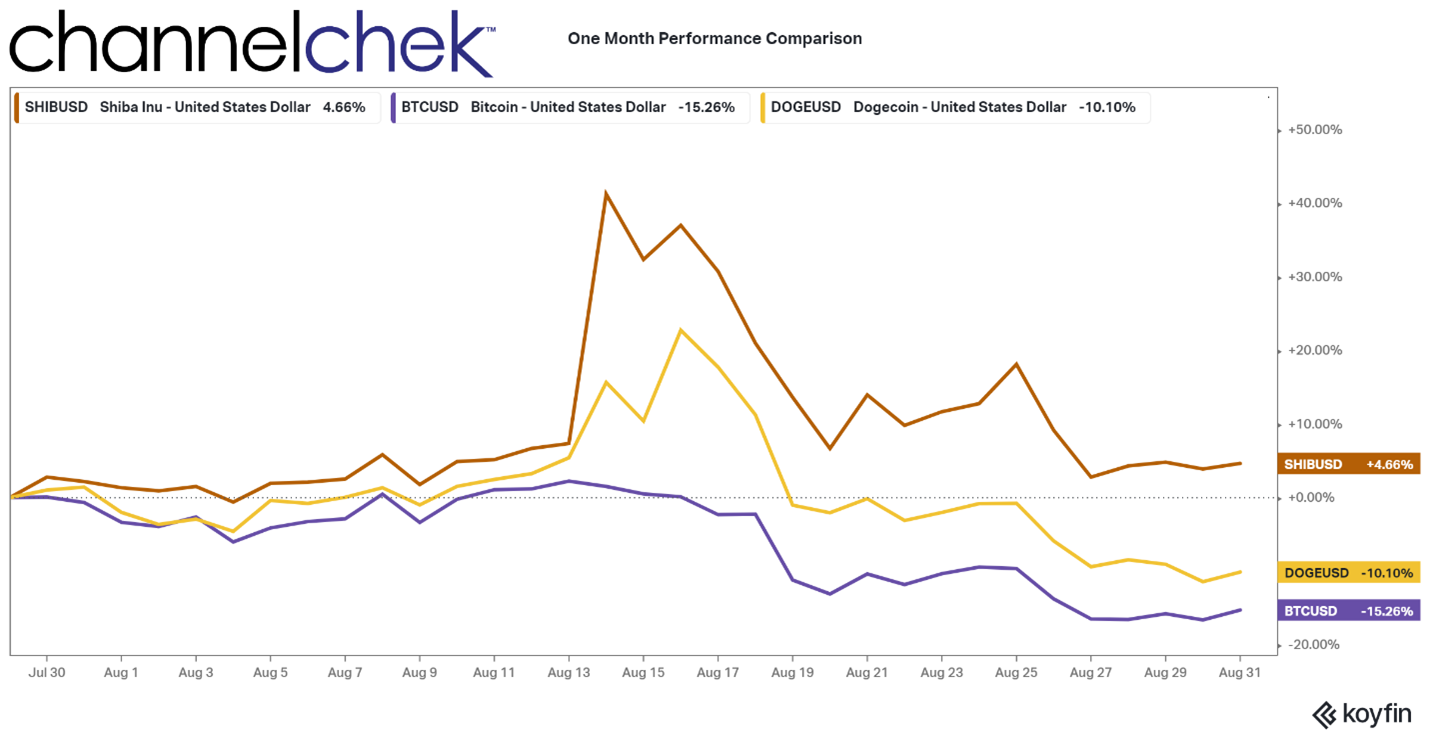

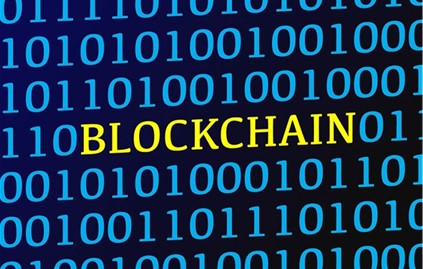
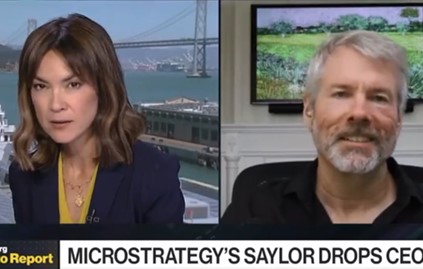



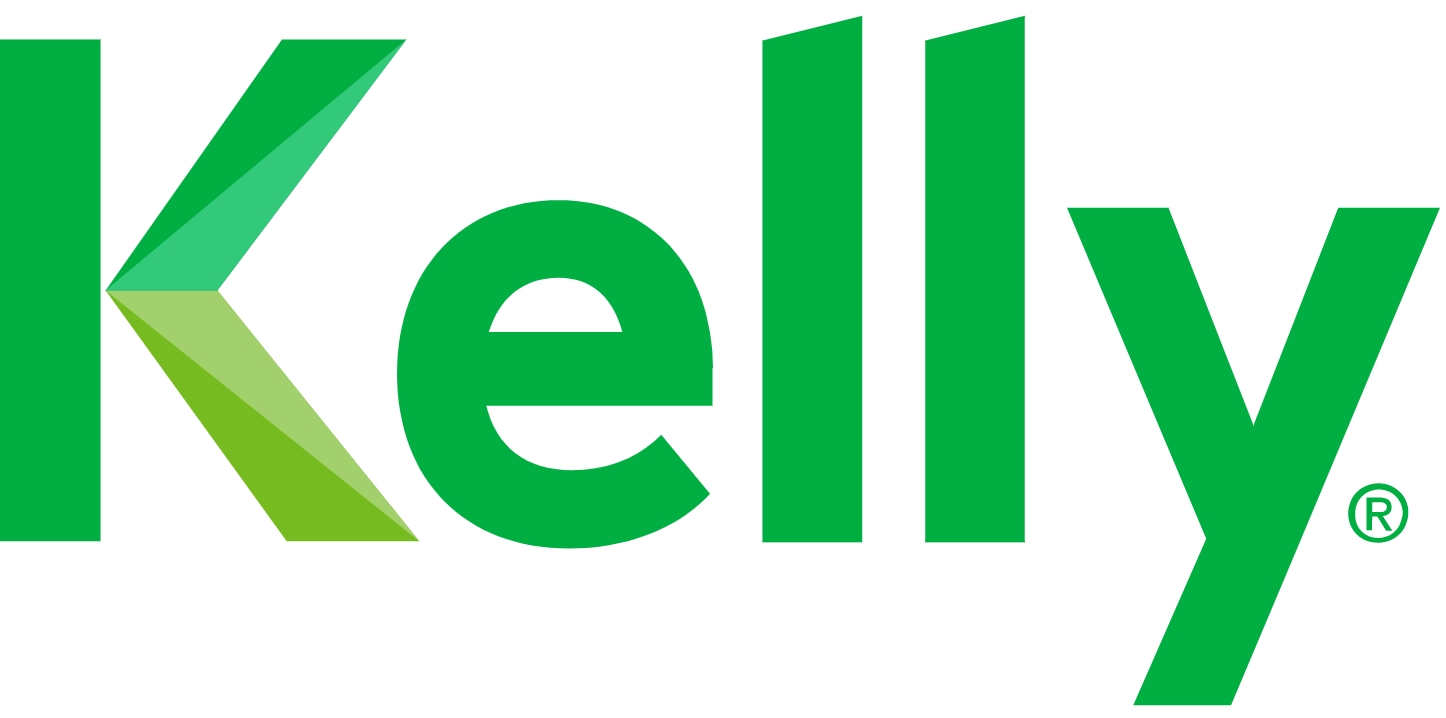






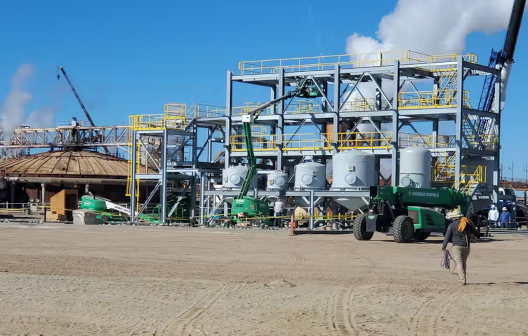
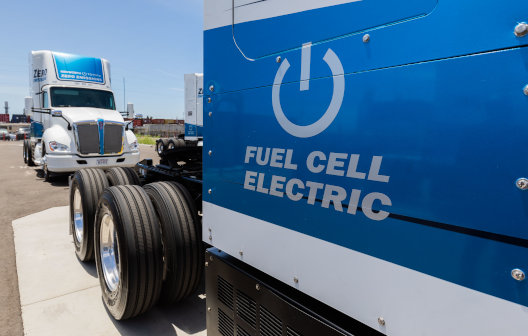





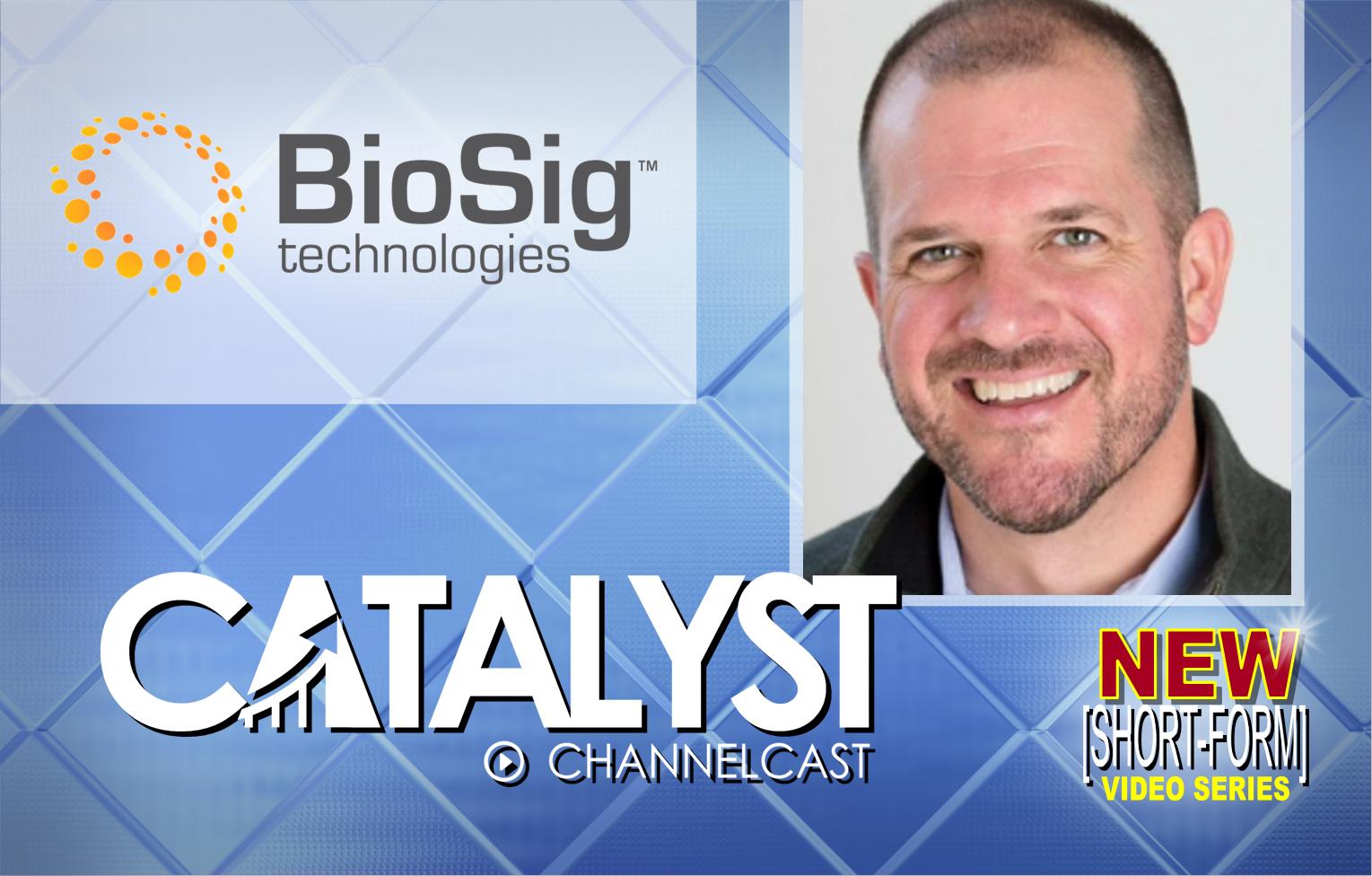
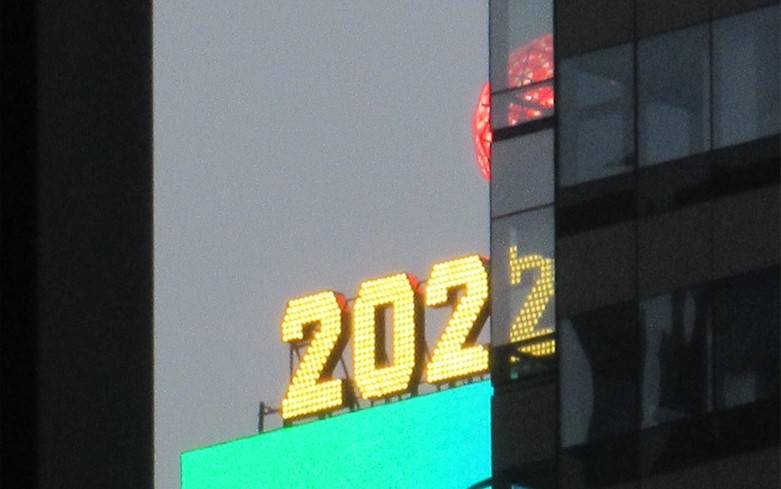
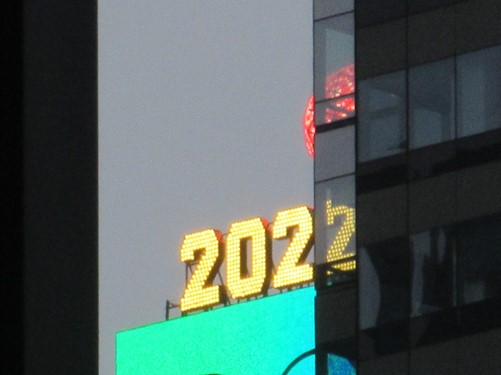 Image Credit: Brecht Bug (Flickr)
Image Credit: Brecht Bug (Flickr)